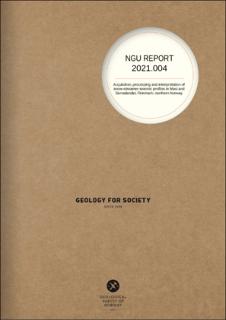| dc.contributor.author | Ruud, Bent Ole | |
| dc.contributor.author | Olesen, Odleiv | |
| dc.contributor.author | Gellein, Jomar Gellein | |
| dc.contributor.author | Johansen, Tor Arne | |
| dc.coverage.spatial | HAMMERFEST | |
| dc.coverage.spatial | 29353: 19354 | |
| dc.coverage.spatial | 19352 | |
| dc.coverage.spatial | 19334 | |
| dc.coverage.spatial | 18331 | |
| dc.coverage.spatial | KAUTOKEINO | |
| dc.date.accessioned | 2021-05-04T13:49:40Z | |
| dc.date.available | 2021-05-04T13:49:40Z | |
| dc.date.issued | 2021 | |
| dc.identifier.issn | 0800-3416 | |
| dc.identifier.uri | https://hdl.handle.net/11250/2753549 | |
| dc.description.abstract | Two snow-streamer profiles were acquired by the University of Bergen in March and April 2012within the programme \u2018Mineral Resources in Northern Norway - MINN\u2019. The two profiles arelocated in the Masi and Sennlandet areas in the Kautokeino and Hammerfest municipalities. Thedata were acquired using a combination of snow-streamer and autonomous nodes. The obtainedreflectors can be traced to a depth of 4-5 km. P-wave velocities are obtained from travel-timetomography of manually picked first breaks. The velocities can be resolved down to a fewhundred meters depth.We have included two interpretation examples of the Masi profile in the current acquisition andprocessing report. The regional c. 4-5 km wide Mieroj\u00E1vri-Sværholt shear zone is represented byseveral reflectors dipping at an angle of c. 40-50\u00B0 to the southeast below the northwestern marginof the Jergul Gneiss Complex. The migrated seismic profile shows that the dip of the western andeastern segments of the Masi fault system (within the Stuoragurra fault complex) is 52\u00B0 and 65\u00B0,respectively. The two postglacial fault segments seem to merge at a depth of c. 500 m.The present study proves that snow-streamer technology is an efficient way to carry out seismicprofiling in snow-covered and relatively flat terrain. Using detonating cord as a seismic sourcehas left no permanent footprint on the sparse vegetation in the Arctic, which is an advantage. Weconclude that the reflection seismic data are of high quality and that the obtained reflectors canbe interpreted in terms of regional geological structures continuing to a depth of 3-4 km. Wesuggest that the western part of the reprocessed Masi profile, and the Sennalandet profile,should be interpreted in a similar integrated way as the examples shown in the present report. | |
| dc.language.iso | eng | |
| dc.publisher | Norges geologiske undersøkelse | |
| dc.relation.ispartofseries | NGU-Rapport (2021.004) | |
| dc.rights | Navngivelse 4.0 Internasjonal | |
| dc.rights.uri | http://creativecommons.org/licenses/by/4.0/deed.no | |
| dc.subject | GEOFYSIKK | |
| dc.subject | GEOLOGI | |
| dc.subject | SEISMIKK | |
| dc.title | Acquisition, processing and interpretation of snow-streamer seismic profiles in Masi and Sennalandet, Finnmark, northern Norway | |
| dc.type | Report | |
| dc.description.localcode | 67206 | |
| dc.source.pagenumber | 35 s. | |
| dc.relation.project | 347100 | |

